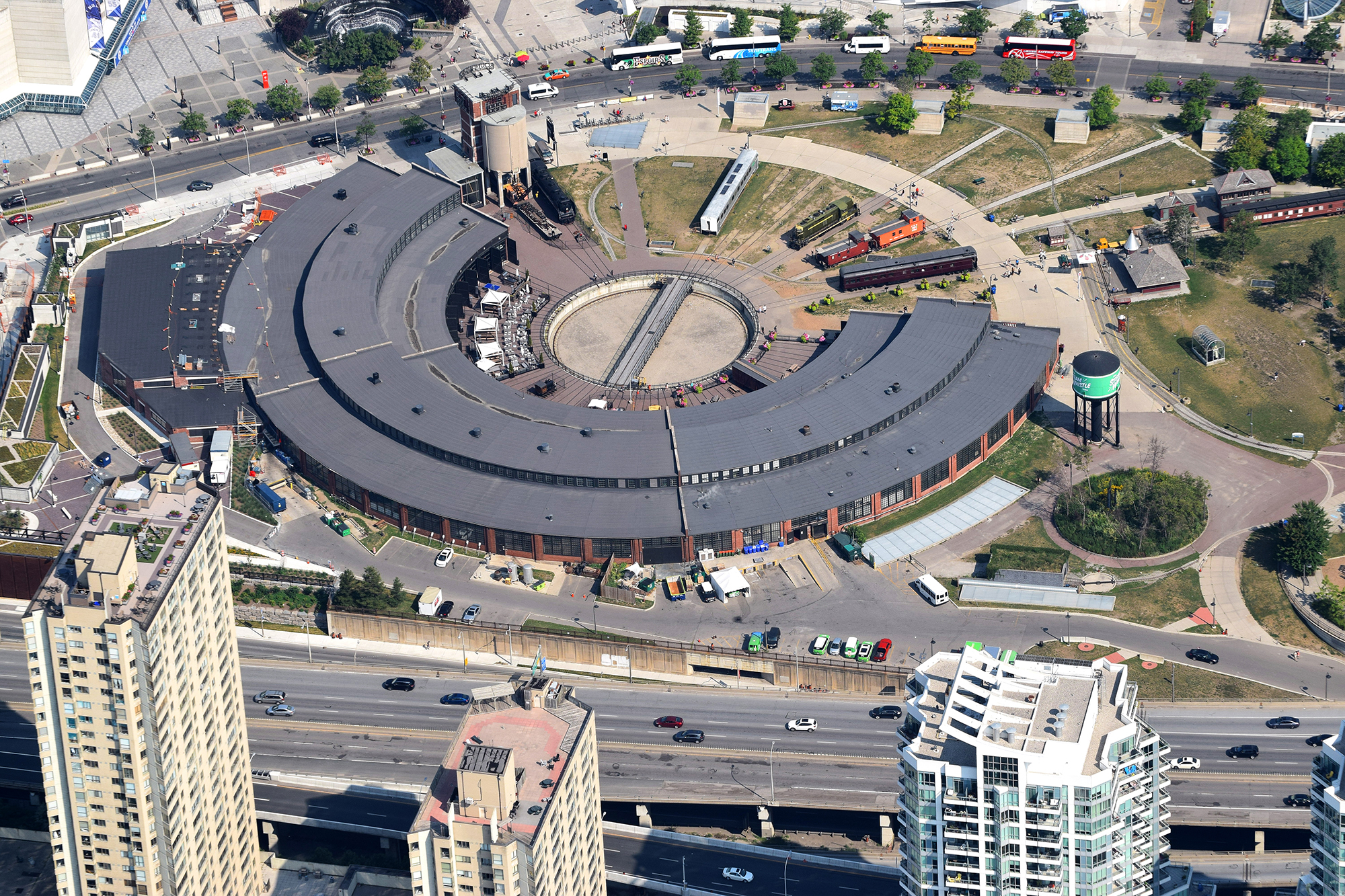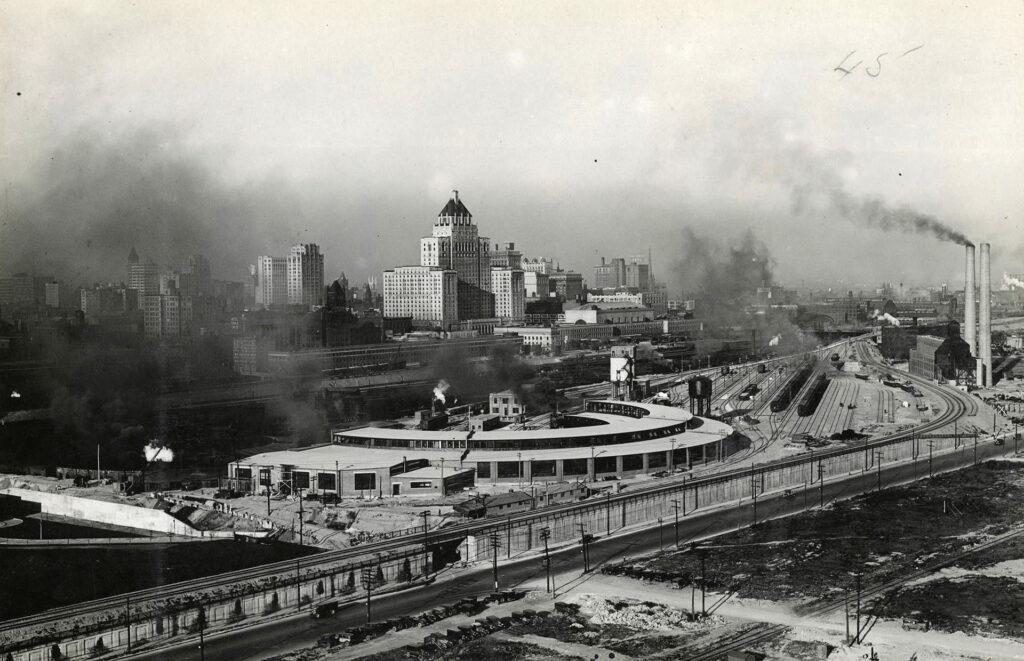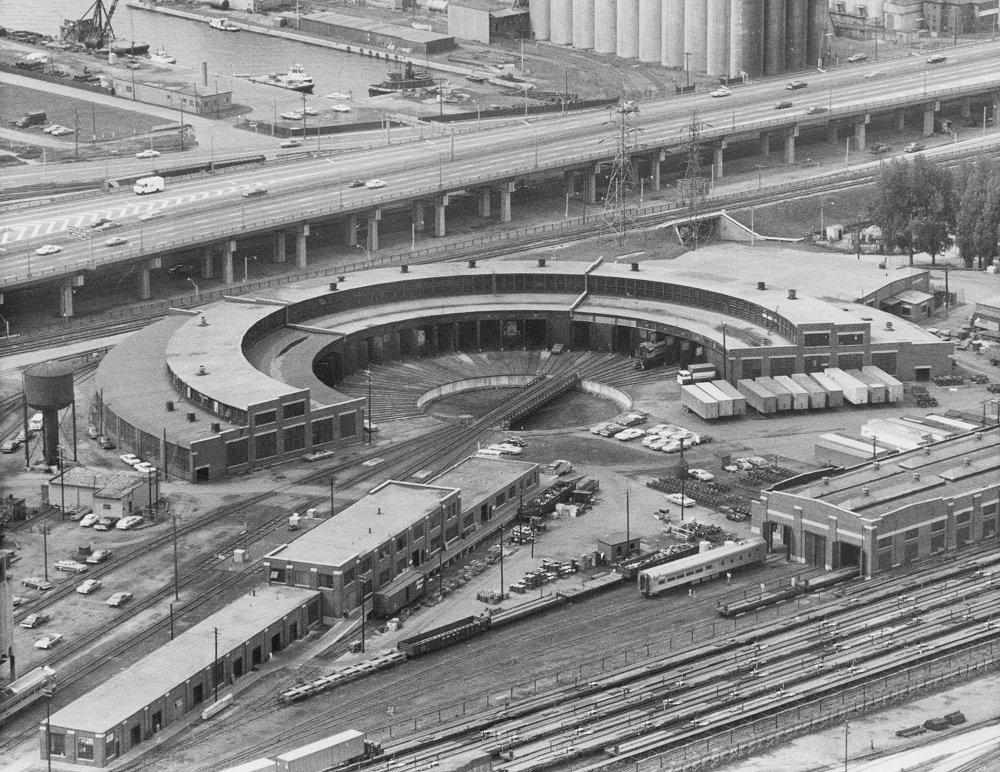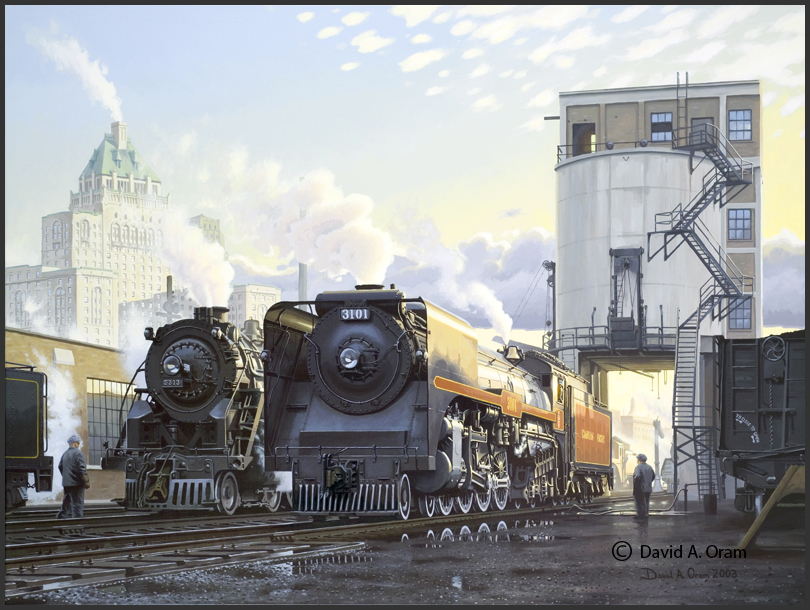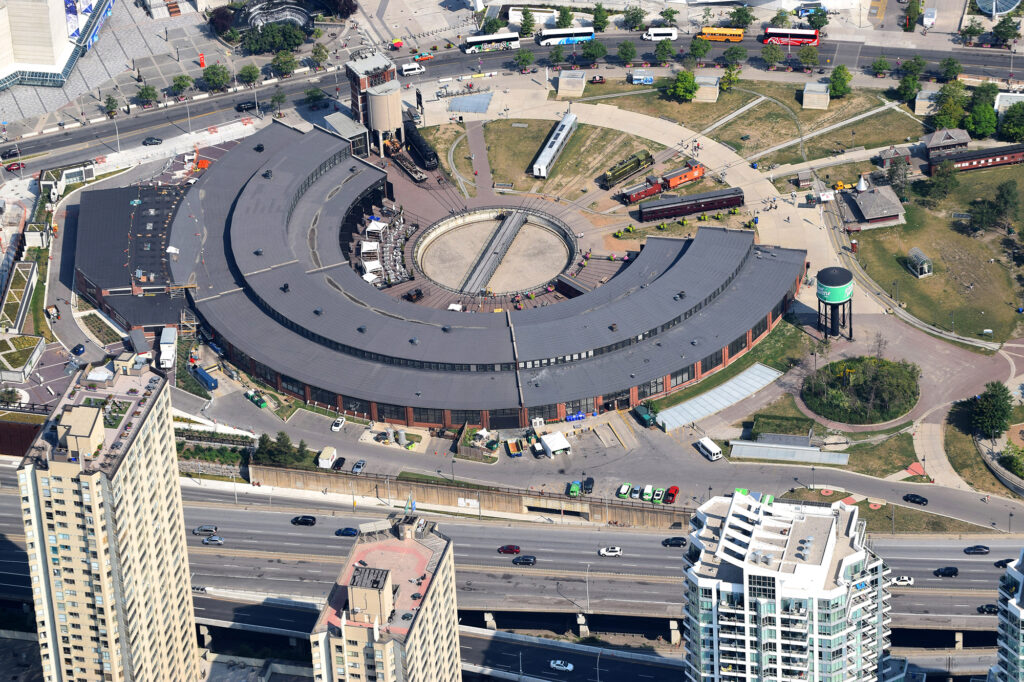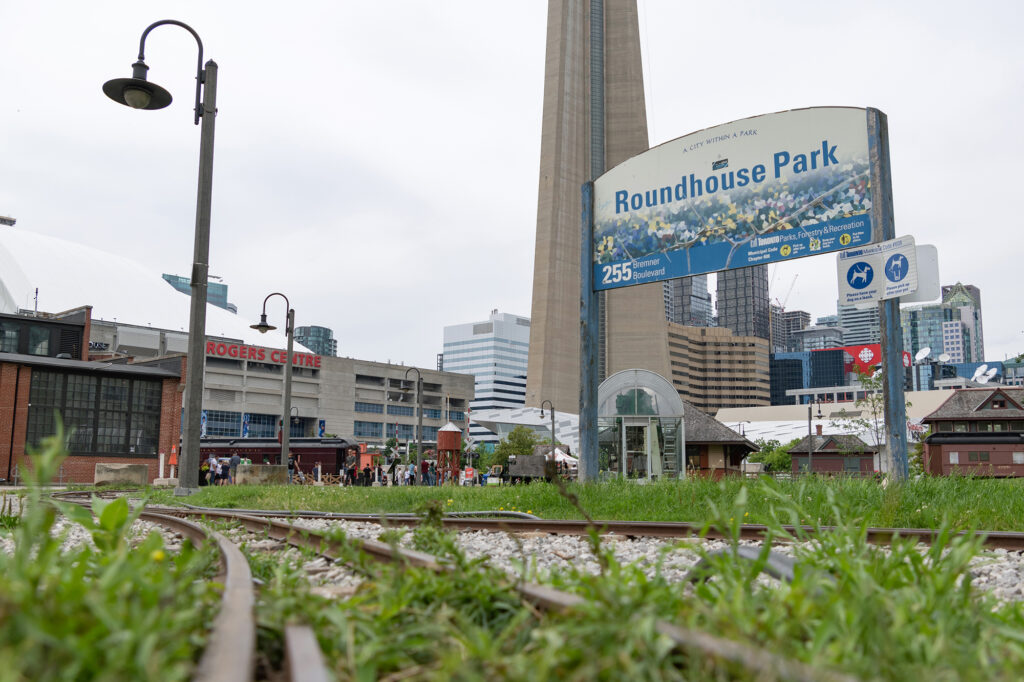Toronto’s Union Station Rail Corridor underwent significant changes during the 1920’s that ultimately led to the construction of the John Street Roundhouse we know today. As Union Station was in the process of being replaced, work was being conducted on raising the elevation of the rail corridor above the surrounding roads. Canadian Pacific took this as an opportunity to replace the original John Street Roundhouse, which was built over two decades earlier in 1897. The 85-foot turntable of this roundhouse and its engine stalls were quickly becoming inadequate for the ever-larger steam engines serviced there.
A 9,300-square-meter roundhouse was built on landfill between 1929 and 1931 by the Canadian Pacific Railway to the immediate southeast of its predecessor. It would ultimately inherit the John Street name even though construction of the new rail corridor resulted in the removal of the John Street bridge, thus separating the roundhouse from John Street altogether. In its prime, the John Street engine facility had 32 stalls, contained 43 structures, several miles of track, and covered nearly 16 acres of property. Up to 150 employees worked in the facility 24 hours a day. There were provisions for an additional 16 locomotive stalls shortly after completion, but the economic effects of the Great Depression would prevent this from happening. It was the most modern locomotive facility in Canada, having steam piped in from the nearby steam heating plant to all but three stalls of the roundhouse. This direct steaming process was the first of its kind in the country, and it allowed locomotives to be moved about the building without having to keep their boiler fires going. This vastly improving visibility for employees inside the roundhouse, which would have otherwise been filled with smoke at all times. The centrepiece of the roundhouse was a massive 120-foot turntable designed by the Canadian Bridge Company, the largest on the entire Canadian Pacific system and one of the largest in Canada at the time of its completion. Locomotives were driven onto the turntable and rotated for positioning into one of the stalls for servicing and light repairs.
Every day John St. locomotives hauled over forty CPR passenger trains in and out of Toronto’s Union Station. Some of them would pull local commuter trains to Hamilton or Peterborough, Ontario. Others would haul quarter-mile-long trains on the initial portions of journeys to destinations as far as Montreal, Vancouver, Winnipeg, Detroit, Chicago and New York City.
The locomotives serviced here were so attractively maintained that their appearance became known among railroaders as the “John Street polish”. For over thirty years the roundhouse was used to service CPR steam locomotives. When the company retired its steam engines in 1960, John Street continued to service CPR and VIA Rail diesel-electric locomotives for another twenty years until 1986 when the CPR decided to close the facility and donate the property to the City of Toronto for a proposed railway museum.
Roundhouse Park was created in 1997 on top of the southern expansion of the Metro Toronto Convention Centre. Encompassing some of the most valuable real estate in Canada, the park once saw little public use other than as a pedestrian shortcut between the Skydome and Lakeshore Boulevard. The Toronto Railway Historical Association is using the park as a permanent home for a miniature railway and other outdoor exhibits illustrating Toronto’s railway heritage. With Toronto Railway Museum events coordinated with those of Steam Whistle Brewing, the TRHA envisions Roundhouse Park as a lively and dynamic venue.
The Toronto Railway Historical Association is utilizing three stalls within the roundhouse and trackage added in Roundhouse Park to display locomotives and rolling stock, as well as display items pertaining to the artifacts. We currently have a simulator allowing visitors to operate virtual trains over tracks in the Toronto area, controlling them using a real locomotive cab and associated controls. The three stalls have been be refurbished so that repairs can also be made to our locomotives and cars. During the hours when the Railway Heritage centre is open to the public, portions of the repair area are accessible for public viewing so that this crucial portion of real railway operation is illustrated and understood.
TRHA intends to bring the roundhouse to life again, showing our visitors the activities and artifacts that made this building such a vital component in the functioning of a railway.


